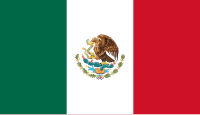
Photo from wikipedia
The Hieronymite monk Diego de Ocaña traveled across South America between 1599 and 1605 as special emissary for the affairs of the order (demandador), in order to foster the cult… Click to show full abstract
The Hieronymite monk Diego de Ocaña traveled across South America between 1599 and 1605 as special emissary for the affairs of the order (demandador), in order to foster the cult of the Virgin of Guadalupe in the Americas. He was to inspect existing Guadalupe shrines and establish new cults where there was no existing veneration of the Virgin. His and his order’s interest was centered on the collection of alms and donations for the shrine and monastery of Guadalupe in Extremadura, Spain, which was also the home base of the Hieronymites. The monastery had been going through a serious crisis since the 1570s on account of greatly reduced pilgrimage activity and a general state of economic emergency in Spain (López de Mariscal and Madroñal 2010, 15). It had traditionally maintained close ties to the Spanish monarchy, and the Guadalupe cult enjoyed numerous influential adherents, both in Spain and in the Americas (Mills 2003, 51). Ocaña himself painted images of the Virgin on various occasions: the most famous and venerated of these (Figure 1) can still be found today in Bolivia’s Cathedral of Sucre, the seat of the former archdiocese of La Plata. He wrote an account of his activities in South America, Relación del viaje de fray Diego de Ocaña por el Nuevo Mundo, 1599–1605, which was addressed to his superiors at the monastery of Guadalupe, but may never have reached them (López de Mariscal and Madroñal 2010, 51–52). The present essay examines Ocaña’s text as well as the cult image he made in Sucre, considering the complex social dynamics and cultural or, alternatively, religious practices that provided the basis for the Marian figure’s creation and the successful establishment of the Guadalupe cult in La Plata. These include the economic interests pursued by religious orders and individual agents in their promotion of Catholic cults. However, local power structures, rivalries, patronage relationships, and personal networks between representatives of the order and members of the ecclesiastical and political elites were also decisive for the ‘social construction’ (Trexler 2004, 18) of cult images within their given contexts. Parallel ‘readings’ of texts and images will be used to provide insights into the realization of and the individual steps involved in the cult image’s production as well as the artist’s and patrons’motivations, the use of source models, the production process, strategies of sacralization, and the work’s financing. Ocaña corresponded to the role that Luisa Elena Alcalá